I asked 30 beginners, including piano & guitar beginners at Enthuziastic, what is the most difficult topic in music theory. Most of them answered "time signature" in music is the hardest. I agree. Time signature is indeed the most confusing topic for early musicians.
It's challenging and requires a strong foundation in sheet music. So, before diving into what time signatures are in music, I suggest you learn how to read sheet music.
Time Signature in Music | All You Need to Know
Music theory comprises many topics–notes, scales, chords, bass clefs, etc. And, you must understand the basics before dealing with time signatures in detail. If you don't know yet, go here. Let's begin with the what is time signature.

1. Definition
The time signature is all about the beats in a piece of music, written at the staff's beginning, mostly after the clef. For instance, when you tap your foot while listening to a piece of music in a particular rhythm, those taps are beats. And, time signature will tell you about the number of beats and the note's value per beat. Time signature in music represents the number of beats per measure and the note value of each beat. It is also called a meter signature. In simpler words, a time signature in sheet music is a way to track how many beats there are in a measure and the type of note that gets one beat. Still confused? Read the next section to understand sheet music and its relation to this topic.
2. How to Read on Sheet Music?
Sheet music is music written on paper. It includes various signs and symbols to record music in a written form. Let's say, the time signature is one of the symbols we use to write down using musical notation. Please note that it's important to learn staff, grand staff, clef, notes, beats, etc. To do so, go here. Once you're done with that only then proceed ahead.


Time signature is always written in fraction form.
For example, the time/meter signature in the above picture is 4/4. In other words, in the above sheet music, there are 4 beats per measure, and each of the beats contains 4 notes–quartet notes.

In this picture, it's a 6/8 meter signature, which means there are 6 beats per measure. And, the note value of each beat is the eighth beat. In simpler words, each beat has 8 notes. Next, let's take a look at the types of time signatures.
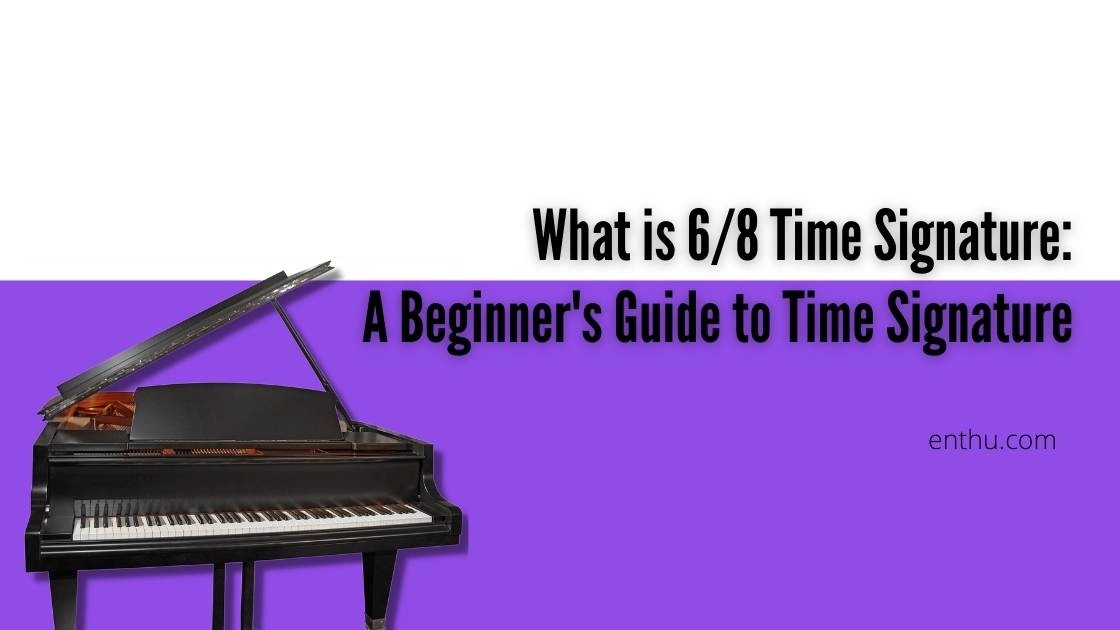
Various Types of Time Signature
There are different time signatures in western music theory. There are many from the ones with symmetrical beat patterns to those with asymmetrical beat patterns. Here, we have enlisted the widely used time signatures you might come across during your piano or guitar learning journey.
Symmetrical Beat Patterns
1. Simple/Common
In this type of meter signature, the beats can be broken down into two-part rhythms, and the notes can be divided into groups of two. As these are the easiest and most common time signatures in music, sometimes they're called simple time signatures, and sometimes, they're called common time signatures.
Learners and listeners find this type natural because a one-two rhythm, like our pulse rate, is easy to count and convenient to follow. A few of the common examples of simple meter signatures are given below.
C Time Signature 4/4
![C Time Signature [4/4]](https://enthu.com/blog/media/0riJghjdUS1u86YF.jpg)
It's the most common one; therefore, it's called the C time signature. As you have read above, in this type, there are 4 beats per measure, and the count one falls on every quarter note.
The symbol is as shown in the above picture. Majority of the popular songs that you've come across follow 4/4 meter, even Queen's "We will rock you."
Cut time 2/2
![Time signature Cut time [2/2]](https://enthu.com/blog/media/xA1hVfTx4ZtyMgzn.jpg)
So what is cut time in music? Cut time is exactly half of the previous type. It means 2 beats are playing per measure and a half note on every second. The symbol is as shown in the above image.

As it's one of the most common meter signatures, it's mostly represented with this symbol instead of writing the numbers. This is called March time because it matches the rhythm of marching, aka walking.
If you listen carefully, you will find a rhythm matching left-right-left-right. Like C time, this one also has the count one fall on every quarter note. Here's a song using this meter.
Waltz Time 3/4
After the C time and cut time, Waltz time is music's most commonly used meter signature. It's called Waltz time because of the three beats per measure. It creates a calming effect in listeners' minds, at the same time, excites them to escape into dreamier oblivion. If you don't believe me, just listen to

2. Compound
In this type, the number of beats per measure is always divisible by 3. In simpler words, the top number in a compound time signature is a multiplier of 3, except that 3 is never on the top in this type.
Note that a dotted note becomes the beat in this type of meter signature. The top number of compound meter signatures are mostly 6, 9, or 12, and the bottom number is commonly an eighth note or a quaver.
6/8
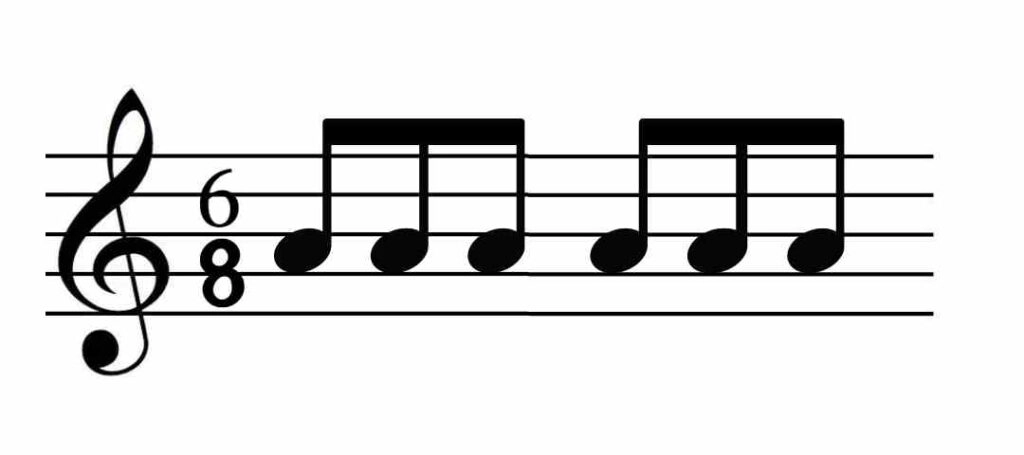
In this 6/8 compound time, there are two groups of three ⅛ (eighth) notes. Remember that ⅛ notes are always in sets of three, not two. It is commonly used in metal, rock, and pop songs. Also, this type is called compound duple time.


9/8 The
9/8 compound meter signature is quite similar to 6/8. It's just that you get another set of three 1/8th notes. It is also referred to as compound triple time. One of the most famous music pieces played using this type of time signature is
12/8
12/8 is called compound quadruple time. In this type, you get four sets of three-eighths (⅛). One of its best uses is in
Asymmetrical Beat Patterns
3. Complex/Irregular
In complex or irregular time signatures, the upper number is mostly an odd number like 5 or 7 and the bottom number is either 4 or 8. Unlike compound meter signature, 5/4 or ⅞ can't be divided into sets with the equal number of notes.
Beatles' Strawberry Fields Forever and Radiohead's Paranoid Android are a few examples of how brilliant the complex meter signature can sound.
4. Mixed

In a music piece with a mixed time signature, the meter signature keeps on changing. For instance, there is a music piece that shows a 5/4 meter signature at the beginning of it. Yet, the signature changes to 6/4. After the next few measures, the meter signature changes back to 4/4. If a piece of sheet music has such a time signature, then it's a mixed time signature. Check out Igor Stravinsky's The Rite of Spring in meter signature.
What is Whole Rest & Half Rest? Read Piano Notes 101: A Simple Guide to learn everything about it.

5. Additive
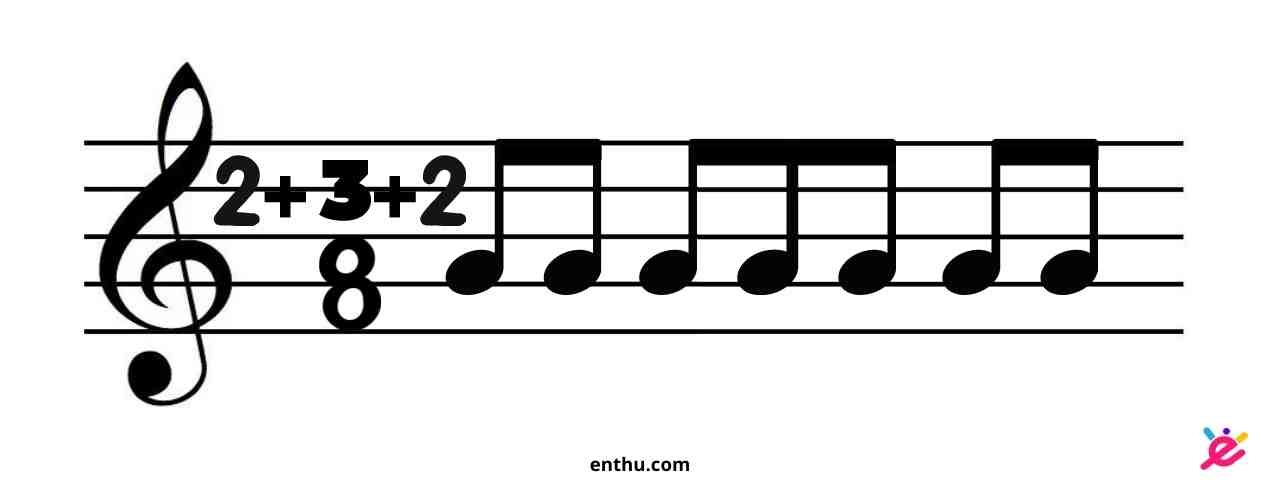
Additive time signatures display beat groups that are actually bars subdivided. In simpler words, the top number (beat numbers per measure) can also be written after breaking down the beats in groups. For example, ⅞ can be displayed as 2+3+2/8. Note that this is applicable for any type of time signature.
6. Fractional
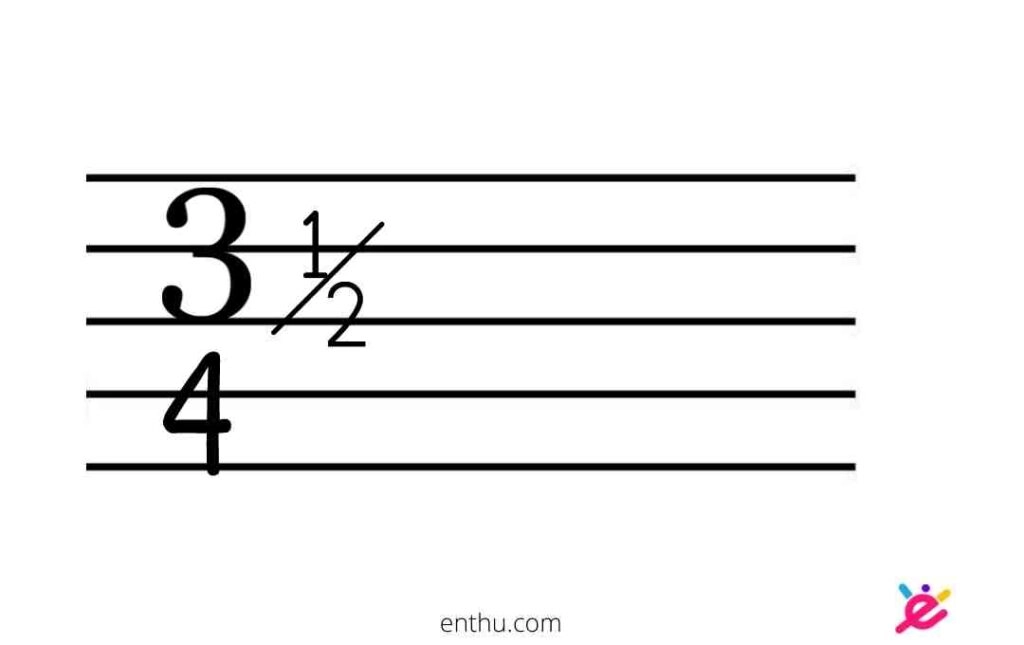
When composers use fractional bar beats on the numerator, it's called the fractional time signature.
For example, 2+1⁄2/4 appears in Carlos Chávez's Piano Sonata No. 3
(1928) IV, m. 1. Also, in Percy Grainger's Lincolnshire Posy, there are 2+1⁄2/4 and 1+1⁄2/4 in the fifth movement.


Conclusion
Dear readers, time signatures are definitely the most difficult section of music theory. However, if you know how to read a sheet music and have a basic understanding of music theory, it will be slightly easier for you. I recommend learning simple time signatures before diving deeper into this topic.

FAQs
1. Are simple and common time signatures the same?
Yes, the simple and common time signatures are the same. 4/4, 2/2, 2/4, ¾, and 6/4 are the easy-to-understand meter signatures and also the ones widely used because of their simplicity. Therefore, they are called simple or common meter signatures.
2. Are time signatures for guitar and piano similar?
Yes. Time/meter signatures aren't specific to a particular instrument. In fact, it's directly related to theoretical western music. Therefore, time signatures for guitar and piano are similar.
3. What are the most commonly used time signatures?
The most commonly used time signatures are 4/4, 2/2, 2/4, 3/4, etc.

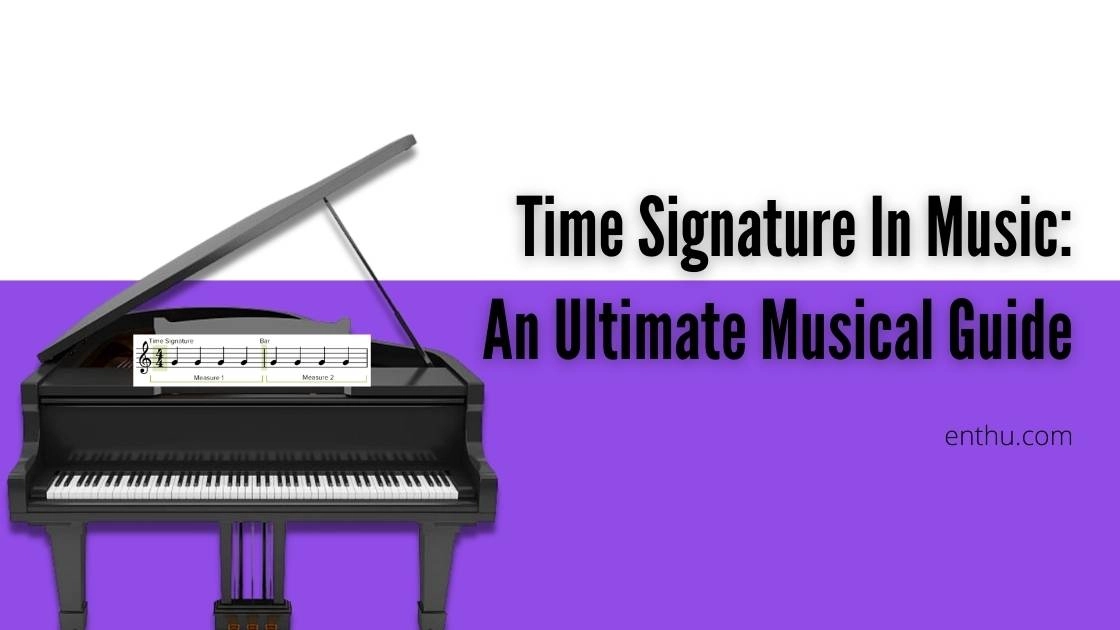
Comments